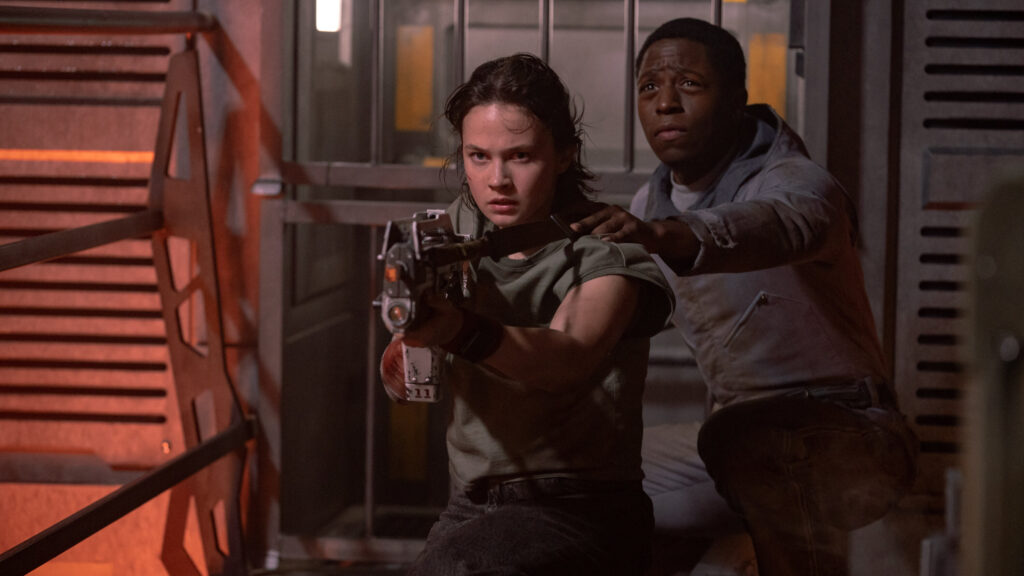
The first Alien was a very scary movie, but it also spawned a franchise that was unusually fearless in terms of reinvention. Made seven years apart, Ridley Scott’s singular original and James Cameron’s pluralized sequel share a few commonalities (Sigourney Weaver, those snarling xenomorphs), but they’re dramatically different in terms of tone and style; one is a gritty, claustrophobic creature feature, while the other is a boisterous, kinetic action extravaganza. David Fincher’s Alien 3 isn’t nearly as good as either of its predecessors, but it earns points for its despairing atmosphere and its defiant refusal to just replay the hits.
But the longer a series runs, the harder it is for each new installment to distinguish itself. Alien: Romulus, which is either the seventh or ninth episode (depending on whether you count its crossovers with the Predator pictures) of outer-space screaming, is a modestly diverting blockbuster, featuring some decent character work and a few scenes of nerve-jangling suspense. But it lacks a true identity or personality, instead feebly mirroring the first Alien (and the underrated Resurrection). The only thing scarier than a monster bursting from your chest, it seems, is the prospect of nudging this franchise in a new direction.
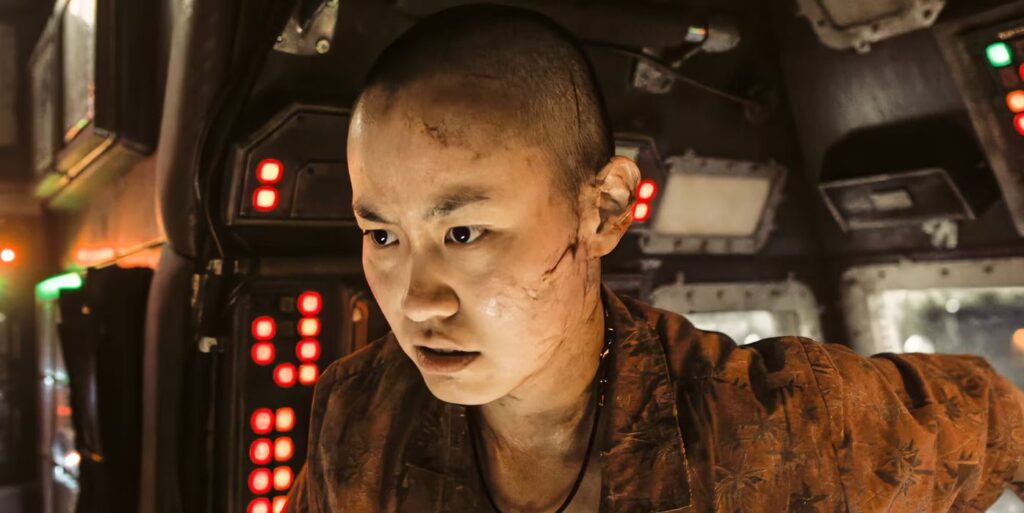
If Romulus doesn’t explore new territory, it does at least change immediate tack. Eschewing the lofty philosophical questions that animated Scott’s return to the universe in Prometheus and Covenant, it aims to (ahem) resurrect the grubby, clammy mayhem that first tormented the crew of the Nostromo a near half-century ago. (Continuity experts have clocked it as taking place between Alien and Aliens.) The inaugural entry will always be best remembered as a pure horror movie, but its tendrils of resonance also extend to its chilling depiction of how a greedy corporation regarded its employees as disposable commodities in its quest for cold profits. Romulus, which was directed by Fede Álvarez from a script he wrote with Rodo Sayagues, bluntly literalizes this dynamic, centering on a crew of indentured servants languishing on a mining colony that never sees the sun. When our wiry heroine, Rain (Cailee Spaeny), insists that she’s labored for long enough to earn passage to a more humane environment for her and her synthetic brother, Andy (a very good David Jonsson), a bureaucrat informs her that her production quota just doubled. This isn’t the type of company that accepts two-week notice; if Rain wants out of this job and off this rock, she’ll need an escape plan.
Structurally, Romulus resembles a crime caper, as Rain and Andy team up with a quartet of malcontents who’ve hatched a scheme to commandeer a derelict vessel and retrofit it to bolt to another planet. Practically, the film’s plot functions as a convenient excuse for Álvarez to trap his wayward souls in an isolated location—a cryptal lair of narrow corridors, spooky crannies, and cobwebbed apparatuses—and then wreak xenomorphic havoc upon them. The success of the movie thus hinges on the appeal of its characters and the caliber of its set pieces.
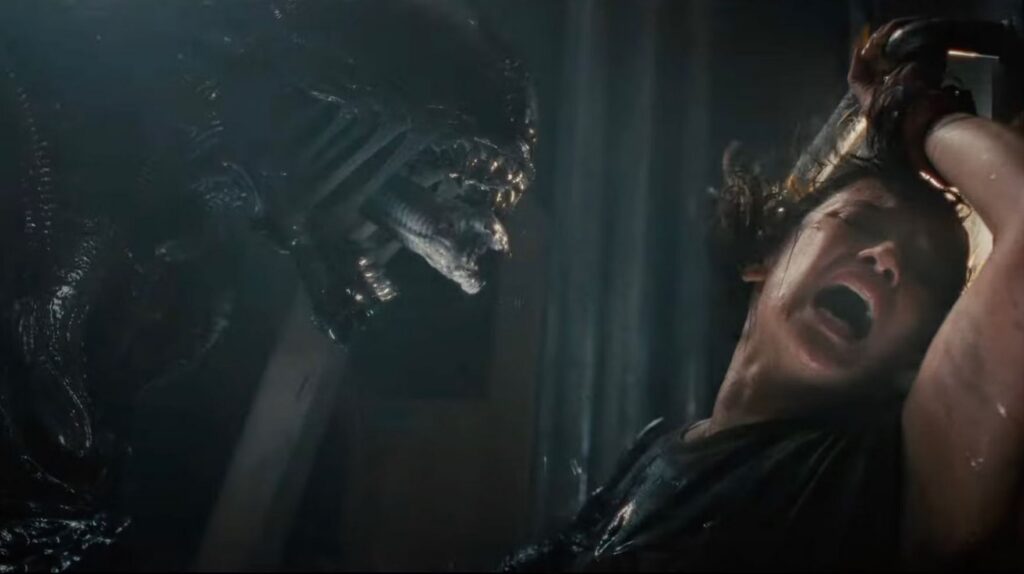
On both of those counts—on pretty much every count, really—Romulus is a mixed bag. Even by popcorn-entertainment standards, Rain and Andy’s co-conspirators are aggressively expendable—a collection of pretty faces and bland personalities destined to be killed off one by one. (The lone point of ostensible interest lies in how one of them harbors anti-android prejudice against Andy, but the screenplay barely pursues the idea.) And despite Spaeny’s sympathetic presence, Rain herself is a flat protagonist, defined more by her generic suffering and default final-girl endurance than by any real emotions.
No, the only genuinely human figure in Romulus isn’t a human at all. When we first meet Andy, he scans as a troubling cliché—a mentally arrested fumbler who worships Rain and who’s fond of telling marvelously terrible dad jokes. (“I’m on a seafood diet: I see food, I eat it.”) But after the plot contrives to upgrade his software, Andy becomes vastly more interesting, both in terms of his physical bearing—his shuffling demeanor is replaced by one of crisp confidence—and in his suddenly fractured loyalty. The scene where he coldly calculates the potential risk and reward of rescuing a comrade, then calmly throws Rain’s moral superiority back in her face, bristles with actual conflict, and Jonsson’s nimble performance lends pathos to a production that is otherwise far more concerned with killing than caring.
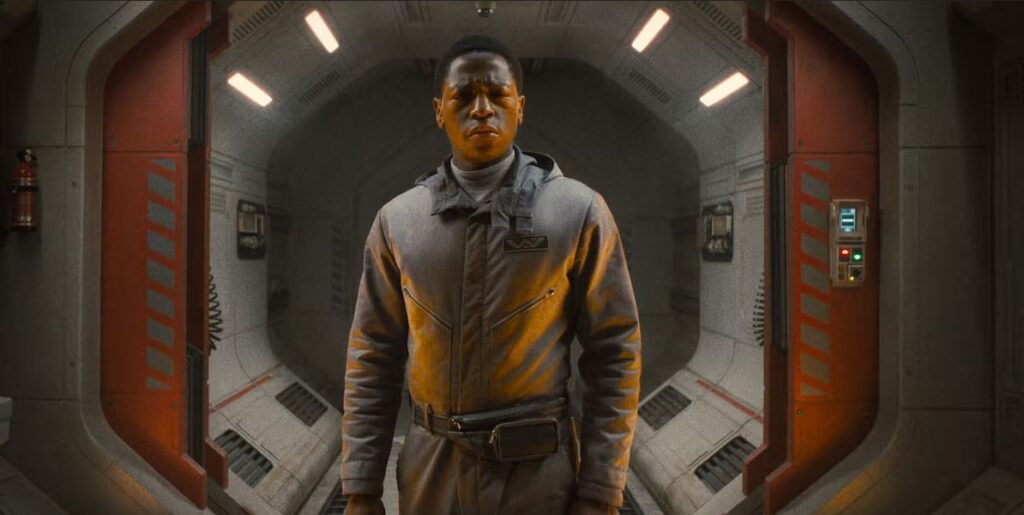
That’s neither a surprise nor a complaint; we pay to watch the Alien pictures first and foremost for their slimy, spattery carnage. But Álvarez’s command of his red-meat material is uneven. He does supply some cool images, like a freshly infected woman X-raying her own abdomen with predictably ghoulish results, and he makes clever use of his villains’ acidic blood, especially in a zero-gravity setting where sulfurous liquid hangs menacingly in the air. The movie’s best sequence, in which its feverish characters must regulate their body temperature while moseying past a batch of blind but deadly creatures, recalls the hushed tension Álvarez brought to Don’t Breathe.
Overall, however, Romulus’ putative thrills are familiar and repetitive rather than inspired. The spaceship’s dank, dark milieu may be superficially unsettling, but it also obscures much of the action, making the combatants’ movements hard to track. There are a great many scenes of aliens of different shapes and sizes latching onto humans’ various body parts, and after awhile all of the lurching and coiling grows monotonous. And for such a big-budget production, the climax—involving the usual gasping and shrieking, along with a high-powered machine gun that feels yanked from a videogame—looks bizarrely cheap, with obvious seams showing in its computerized manipulation. It’s instantly forgettable.
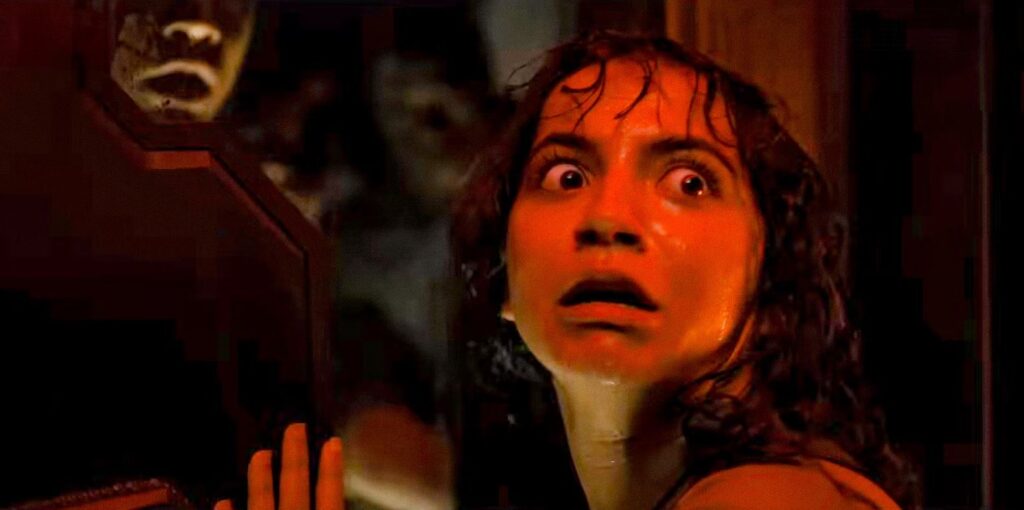
What is more memorable is also more dispiriting: the movie’s dubious decision to revive a beloved member of the Nostromo and digitally repurpose their likeness into an uncanny hybrid of old-school animatronics and modern special effects. I’ll let ethicists focus on the disquieting implications of filmmakers wielding artificial intelligence to exhume a dead actor’s face. But from an artistic perspective, the conceit reveals a certain sweaty desperation on Álvarez’s part—a need to cater to hectoring fanboys by attaching his new picture to its ancestors, rather than letting it stand as its own independent creation. This sense of yoking is pervasive; when a character says “Get away from her, you bitch,” we’re meant to pump our fist in recognition, but the moment just operates as a pale echo of Weaver’s classic imperative from Aliens.
The science-fiction genre embodies the promise of discovery—the opportunity to behold new sights and sounds. Alien: Romulus offers its share of creepy visions (I admired the shot of a serpentine creature snaking its way around a victim’s neck, waiting to strike if threatened), but it isn’t an invention so much as a refurbishment—a system update designed to bring Scott’s elemental monster into the digital age. If anything, the movie exhibits too close a kinship with its brutal xenomorphs, with their terrifying penchant for invading their hosts. It clings dearly to its cinematic forebears, and in so doing it resembles less an evolutionary mutation than a parasite.
Grade: C+
Jeremy Beck is the editor-in-chief of MovieManifesto. He watches more movies and television than he probably should.
